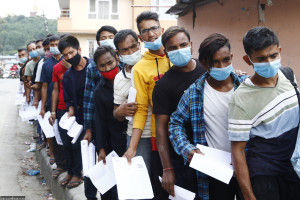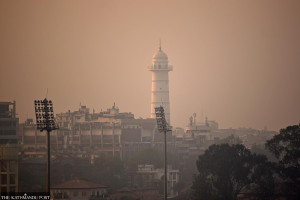Money
Nepal’s ‘hunger situation’ better
Nepal has made significant progress in reducing hunger and is well ahead of India, Bangladesh and Pakistan, but trails behind Sri Lanka on the hunger index among South Asian countries
Sangam Prasain
The 2014 list prepared by the International Food Policy Research Institute (IFPRI) placed Nepal in the 44th position out of 76 countries with a score of 16.4 in the GHI. Nepal was placed in the 49th spot in 2013, up from the 60th position in 2012.
The GHI considers a score above 30 as extremely alarming, 20-29.9 alarming, 10-19.9 serious, 5-9.9 moderate and 4.9 low. The report shows that Nepal’s hunger status has decreased by 42.25 percent in the last two and a half decades.
Among Saarc countries, India ranked 55th, Pakistan 57th and Bangladesh 57th. Afghanistan and Bhutan have not been included in the index due to lack of data. The report shows Sri Lanka in the 39th position. The GHI calculation does not include higher-income countries.
The report says that regionally, the highest GHI scores-and therefore the highest hungers levels-are in Africa south of the Sahara and South Asia, which have also experienced the greatest absolute improvements since 2005.
South Asia saw the steepest absolute decline in GHI scores since 1990. Progress in addressing child underweight was the main factor behind the improved GHI score for the region since 1990.
The GHI report-the ninth in an annual series-presents a multi-dimensional measure of national, regional and global hunger. The report combines three hunger-related indicators-the proportion of undernourished in the population, the prevalence of underweight in children and the mortality rate of children.
In Nepal’s context, the report shows 16 percent of the population to be undernourished, 29.1 percent of under-five children to be underweight and 4.2 percent of them dying before they reach five years of age.
The data for under nourishment is based on data from 2011-13, prevalence of underweight children from 2009-13 and the under-five mortality rate from 2012.
The prevalence of underweight in children under five years remained unchanged last year while there has been progress in two other hunger-related indicators-proportion of undernourished and under-five mortality rate which were 18 percent and 4.8 percent respectively last year.
Senior economist Bishwambher Pyakurel said that remittance inflows had been one of the major factors in poverty reduction that has improved Nepal’s status in the global report, but added it did not generate any kind of excitement in the country where a vast income inequality exists.
The global report is generally prepared by picking a couple of positive indicators to make a comparative ranking of the country, but if the report is compared locally, it does not match with real life, he said.
The 2014 GHI shows that progress has been made in reducing the proportion of hungry people in the world. Despite the progress, levels of hunger remain “alarming” or “extremely alarming” in 16 countries.
This year’s report focuses on a critical aspect of hunger that is often overlooked-hidden hunger. Also known as micro-nutrient deficiency, hidden hunger affects more than an estimated 2 billion people globally.
“The repercussions of these vitamin and mineral deficiencies can be both serious and long-lasting,” the report said.
“While recent years have seen more ambition and action, the tragedy of hunger persists for 805 million hungry people today,” it said.




 24.97°C Kathmandu
24.97°C Kathmandu















